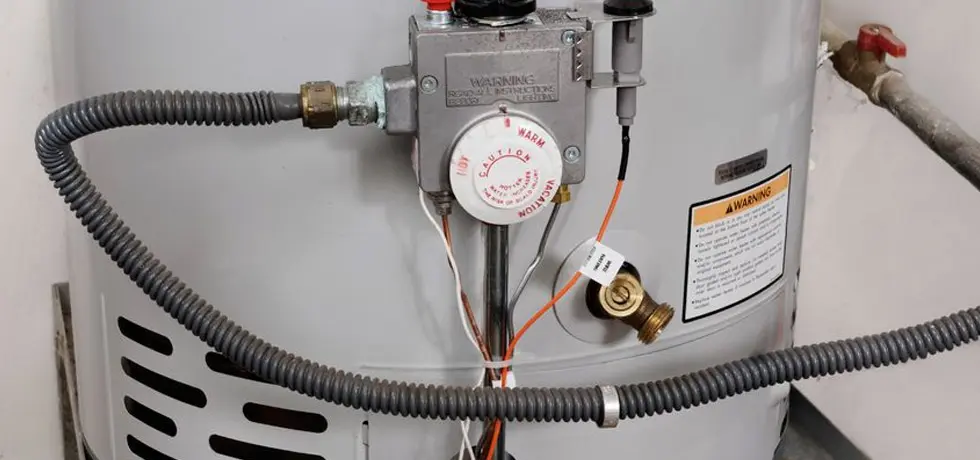
The water heater is one of our homes’ most reliable and dependable appliances. It doesn’t require much maintenance, and you can depend on it to give you more than 10 years of exemplary service. However, there are times when you’ll need to switch it off.
Whether you’re going for a vacation, the main water supply is shut off, or you need to do some maintenance, knowing the proper steps is essential. Generally, you won’t need any tools to turn off your water supply at these three places.
- At the leaking water heater
- At the leaking plumbing fixture
- At the main water supply line to your home
Let’s take a closer look at:
How To Turn Off the Water at Your Leaking Water Heater
A water heater has two valves that you can use to shut off the water supply to and from the appliance. The first is the cold water inlet valve (it has a blue handle), and the second is the hot water outlet valve (you can identify it by its red handle).
You should shut off the blue/ cold water inlet valve for your repairs. If you don’t see the red hot water valve, don’t worry. Some contractors opt not to install a valve on the hot water outlet, since shutting the cold water inlet valve automatically cuts off water to the heater.
Here’s how you’ll go about it.
Turn Off the Electricity or Gas to the Water Heater
It’s imperative that you turn off any power or gas supply to your heater before any maintenance routine.
- Gas water heaters – Locate the thermostat close to the bottom of your water heater. Next, turn the knob at the top of the thermostat in a clockwise direction to an OFF state.
- For electric water heaters – Here, locate the circuit breaker panel and switch OFF your water heater’s breaker.
Turn OFF the Water Supply
- Next, locate your water supply’s shut-off valve and twist its handle in a clockwise direction until it stops. You can quickly find the shut-off valve on the right side cold line at the top of your water heater.
Drain the Water Heater if Necessary
- Run a garden hose to your water heater and drain the faucet located at its bottom.
- Run the opposite end of the hose to a lower location to maximize on gravity while draining. Also, ensure that you drain to an area whereby hot water won’t cause any damage.
- Also, the hot water can contain rust, which may end up discoloring some surfaces within your house if you drain poorly.
For easier draining, open the drain faucet on the water heater and any other hot water faucets in the house. By doing so, you’ll be allowing air to enter the heater as water drains.
Finally, some people are not comfortable handling the water heater or draining it themselves when they aren’t experienced in certain types of home repairs. If you fall in this bracket, you’re much safer calling in a licensed plumber in Concord or beyond to clear the problem.

